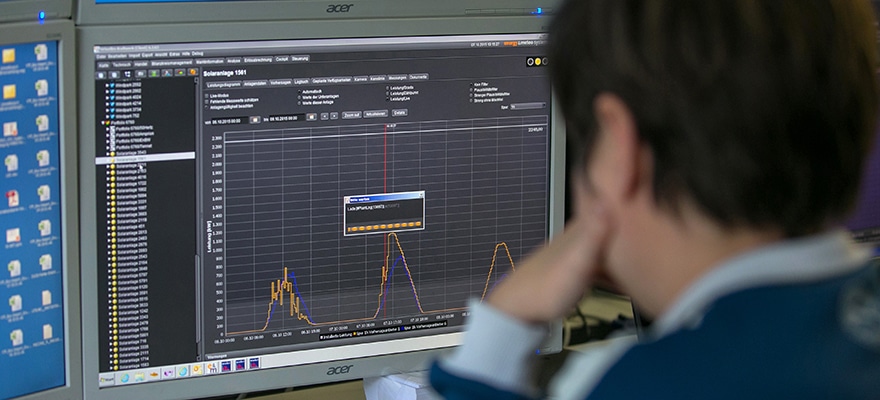The Hong Kong Securities and Futures Commission (SFC) has announced its Q3 results for its 2015/2016 financial year ending in March 31st. The independent regulator said license applications totaled 1,916 during the quarter ending December 31st and was up 12.3% Year-on-Year (YoY).
The agency is taking numerous steps across several verticals to improve its operations, such as regarding proposed updates of the guidelines for regulating automated trading services, short position reporting, client agreement requirements, and other upcoming changes. Furthermore, areas such as product development, listings, enforcement, and global regulatory collaboration were also noted as explained below and in the report.
Q3 income drops over lower market volumes compared with preceding quarter
The regulator's income for its Q3 period ending December 31st was $348 million or 2% lower than the previous quarter. Average daily turnover in Hong Kong’s securities market was $75 billion, 26% lower than the previous quarter and therefore its levy income decreased to $275 million for its Q3 financial year, from $375 million in the prior period. Expenditure was $416 million, 8% higher than its Q2 totals. The SFC recorded a deficit of $68 million in Q3, compared to a deficit of $32 million in Q2. By the end of its Q3 ending December 31st, the SFC’s reserves stood at $7.4 billion, and SFC staff totaled 823 members, up from 784 employees a year ago.
Enforcement
A total of $34 million in fines was collected during its Q3 reported period, including across four licensed corporations and eight sanctioned licensed representatives. Interim court orders from the local CFI court helped freeze $23.5 million in assets from Maxim Capital Limited to restrain it from advertising an unauthorized collective investment scheme, according to the press release. There were also court proceedings, extensive surveillance work with 1801 requests made for information, disciplinary actions, and misconduct proceedings that the SFC highlighted.
In addition, the SFC disqualified three former directors of First China Financial Network Holdings Limited for the breach of their duties related to Payments of RMB 18.7 million connected to the company’s chairman on the pretext of a non-existent agreement (i.e. without formal paperwork in order backing the transaction).
New products
The regulator authorized that 13 mainland mutual funds receive recognition under a recognition scheme between China and Hong Kong, and refreshed its authorization process for new public investment fund applications to improve processing time. Renminbi products that the SFC authorized included 71 RQFII/Stock Connect unlisted funds and 24 ETFs.
In addition, under the dual filing regime, the SFC vetted 48 listing applications alongside SEHK during the quarter, a 50% increase in filings year-on-year.
MoUs, IOSCO, and broadening scope of cross-border regulatory cooperation
The SFC entered into a memorandum of understanding (MoU) with the US Commodity Futures Trading Commission (CFTC) on regulated entities that operated on a cross-border basis, and a further MoU with the European Securities and Markets Authority (ESMA) for derivative contracts held in trader repositories.
The SFC’s CEO Mr. Ashely Adler was elected as vice-chairman of the board at the International Organization of Securities Commissions (IOSCO) in December. The SFC also emphasized how to better supervise its globally-active firms by widening the scope of its cooperation with overseas regulators. The Securities and Futures (Amendment) Ordinance 2015 enables the SFC, subject to a number of conditions and safeguards described in the report, to provide a particular form of supervisory assistance to regulators outside Hong Kong upon request.
A new CEPA (Mainland and Hong Kong Closer Economic Partnership Agreement) was signed between the government and the Ministry of Commerce on November 27th and will be implemented on June 1st 2016.
Finally, the SFC worked with the government of the Hong Kong Special Administrative Region and other regulators to provide further feedback to the second stage of consultation related to proposals to establish a cross-sector resolution regime for financial institutions and market infrastructure. Known as the Financial Institutions (Resolution) Bill, the bill was introduced into the Legislative Council in December with the objective of setting up a regime aimed at helping financial institutions avoid or mitigate risk (i.e. systemic risk, counterparty risk, etc…).
Client agreement and compliance changes
The SFC issued its conclusions in early December on the Client Agreement Requirements that all intermediaries must comply with on or before June 9, 2017, such as including a clause into client agreements that provide an investor with the option to claim damages in the event of mis-selling by an intermediary, among other requirements aimed to provide fairer terms of business and protect clients from mis-described services.
The regulator also hosted a workshop for 120 in-house compliance professionals from licensed firms in November, and following the October 22nd circular updating participants on the implementation of the over-the-counter (OTC) derivatives regulatory regime and to explain the transitional arrangements for market participants who intend to continue with their existing OTC derivatives activities when the new licensing regime commences, according to Q3 report.
On 20 November, the SFC published a consultation paper on proposed changes to update the Guidelines for the Regulation of Automated Trading Services and to align them with international standards and practices. The changes include more specific requirements for central counterparties which provide clearing services for over-the-counter (OTC) derivative transactions. The consultation ended on 31 December and the SFC is still reviewing the comments received.
OTC derivatives
On September 30th The Hong Kong Monetary Authority (HKMA) and the SFC began a joint consultation on the introduction of the first phase of mandatory clearing and the second phase of mandatory reporting, and provided an update in February.
Automated trading services & Stock Connect
As of 31 December, the number of ATS2 authorizations under Part III of the Securities and Futures Ordinance (SFO) was 38, while 27 corporations, including 16 dark pool operators, were licensed or registered under Part V of the SFO to provide ATS.
Regarding the Stock Connect endeavor, the SFC continued to work closely with the China Securities Regulatory Commission, Hong Kong Exchanges and Clearing Limited and other relevant parties to monitor the operation of Shanghai-Hong Kong Stock Connect.






















